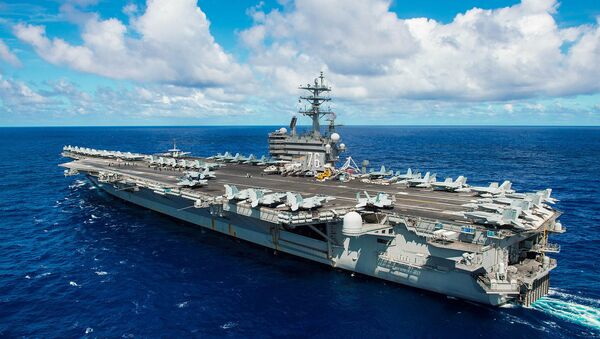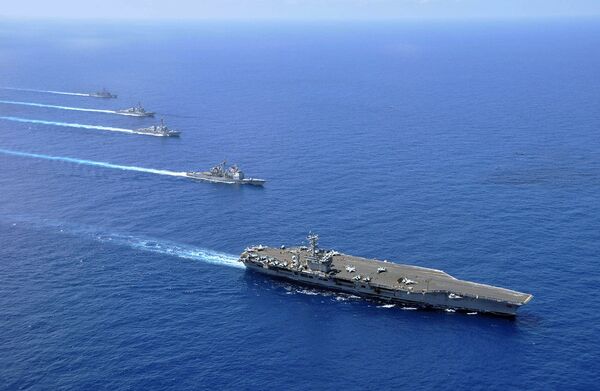The USS Ronald Reagan, with other ships in its naval flotilla, including the guided-missile cruisers USS Chancellorsville and USS Antietam, anchored off the capital of the Philippines Wednesday, in its second port call in Manila in just over a year, reports the Rappler.
The official purpose of the Ronald Reagan Carrier Strike Group visiting Manila is a break from patrol duty, offering the more than 5,000 crew some down time, with engagements planned with the Philippine Navy and social events highlighting bilateral ties.
In a briefing on board the warship, the strike group's commander Rear Admiral Karl Thomas responded to journalists’ questions regarding the geopolitical tensions in the region, emphasising that part of Washington's response to the volatile situation is its naval presence.
"The beauty of this aircraft carrier is that it provides a lot of security and stability to this region. It allows us to go out there and set an environment where these kinds of disputes can be solved in a peaceful manner," said Thomas.
"Our goal is to allow folks to be able to sail and operate wherever international law allows and I think we do that fairly effectively," he added.
US- China Tensions
The visit of the US naval strike group comes against the backdrop of statements made by US Defense Secretary Mark Esper as he set out on a visit to the Asia-Pacific region.
Esper said he wanted to deploy intermediate-range conventional missiles at various Asia-Pacific sites within months, as the US officially withdrew last week from the Intermediate-Range Nuclear Forces Treaty. He also claimed China was destabilising the Indo-Pacific, and charged Beijing with “predatory economics”, “intellectual property theft” and “weaponizing the global commons”.
“We firmly believe no one nation can or should dominate the Indo-Pacific and we are working alongside our allies and partners to address the region’s pressing security needs, Esper told reporters in Sydney, in statements that fed into the flames of already heightened tensions between Washington and Beijing as they wage an escalating trade war.
China was swift to refute the US Defense Secretary’s claims that it was destabilising the Indo-Pacific region, dismissing the remarks as irresponsible blame shifting, and reiterated the purely defensive nature of Beijing’s military involvement.
Chinese Foreign Ministry spokesperson Hua Chunying blamed the US for grossly meddling in the affairs of Asia Pacific countries and attempting to drive a wedge between them by promoting so-called "Indo-Pacific strategy" while enhancing military deployment and strengthening military alliances in the region.
South China Sea
The Philippine government recently elevated its rhetoric aimed at China, with the Secretary of National Defense of the Philippines Delfin Lorenzana characterising China's actions in the West Philippine Sea as "bullying" and Manila openly admitting that it benefits from Washington's push for freedom of navigation in the South China Sea.
The South China Sea is one of the world’s busiest waterways, subject to a number of overlapping territorial disputes, involving the Philippines, Vietnam, China, Brunei, Taiwan and Malaysia, with China claiming over 80 percent.
About 80 percent of China’s oil imports arrive via the Strait of Malacca, in Indonesia, and then sail across the South China Sea to reach China.
The US regularly sends its military vessels to the area to carry out so-called “freedom of navigation” missions. Beijing sees these as provocative moves, and has urged Washington to stop the practice.





